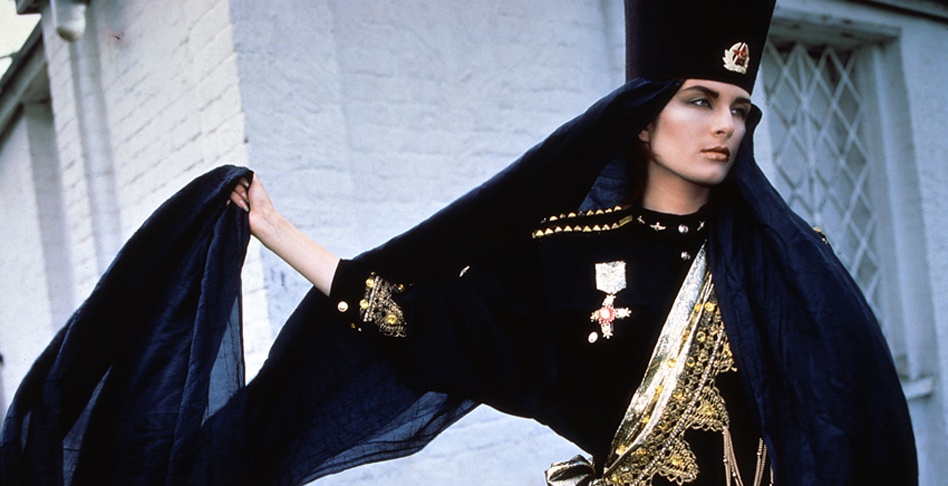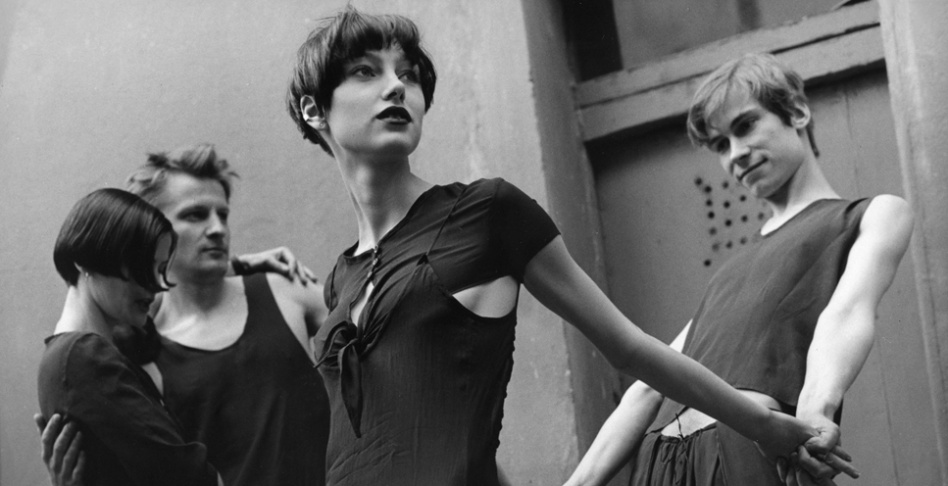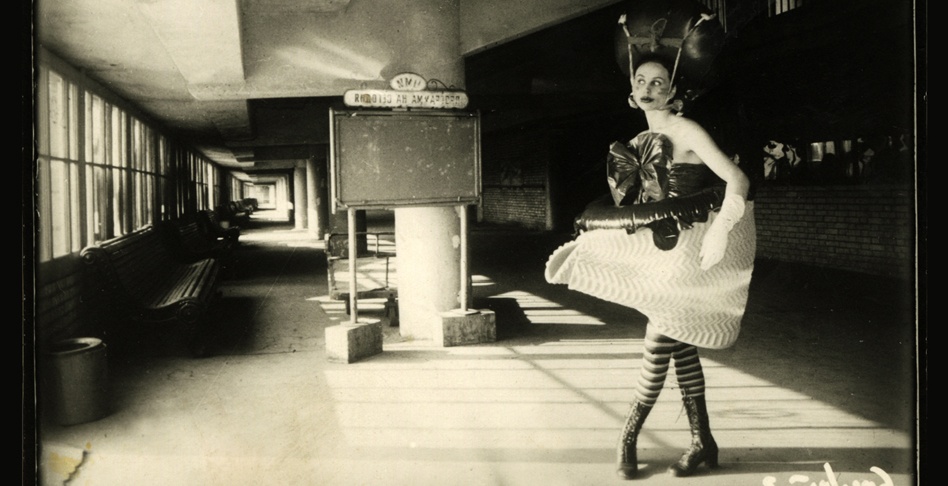Loft Project ETAGI and Garage Center for Contemporary
Culture present the exhibition Alternative Fashion before
Glossies. 1985-1995
The «Alternative Fashion before Glossies, 1985-1995» show displays
the history of alternative fashion, a trend that emerged at the junction of
rock and squat club culture, during the period that started with early
perestroika and ended those the arrival of glossy fashion periodicals in mid
1990s. In mid 1980s the inebriating atmosphere of freedom triggered an
unprecedented surge of underground culture. The gathering of Avant-Garde
artists, musicians, representatives of various subcultures – of punk, rock, the
New Wave – gave birth to a unique phenomenon of alternative fashion with shows
often turning into performances. Its catwalks were not only such venues as the
Fashion House in the Kuznetsky Most street, the shows often took place at the
concerts of Sergei Kuryokhin’s Popular Mechanics group, the Sovincenter hall,
and squats, concert halls where rock music roared, and streets in the center of
the city. Alternative fashion was made famous by incredible combinations of
hoop petticoats made of climbers’ blankets and French lace, uniform tunics
boasting open backs, and skirts with folds suspiciously reminding viewers of
draperies. The new trend in fashion emerged in the period of the revolutionary
gap in the time when Soviet fashion ingloriously died, trampled down by
imported products and new tastes of ordinary citizens.
During 1985-1995 alternative fashion was the symbol of changing time and a
brand of the perestroika. USSR abroad, drawing the attention of western media
with its experimental features. Artists played the hard roles of trendsetters –
the Avant-Garde and socialites expressed their attitude to contemporaneity
through images and wear.
While at the beginning alternative fashion as a trend was romantic in its
amateurism, at the end of the period alternative fashion designers created
authors’ collections and shows which were in great demand among global
professionals. The phenomenon of alternative fashion was noticed and
appreciated by such western couturiers as Vivienne Westwood who had thought
earlier that there could be no fashion in the country of sickles and hammers,
and Yohji Yamamoto for whom special shows were organized in the epicenter of
the liberal Moscow fashion crowd in the Petrovsky Avenue. Paco Rabanne, Andrew
Logan, Zandra Rhodes and many other less famous couturiers of Europe were
interested in taking part in the Riga Assembly of Untamed Fashion organized by
Bruno Birmanis. Pani Bronya (Dubner), a model of the Avant-Garde artist
Alexander Petlyura (Lyashenko), became a symbol of recognition for the Russian
alternative fashion when she was awarded the title of Alternative Miss World
1998. The exhibition will present about a hundred photographs with images of
fashion created by Katya Filippova, Gosha Ostretsov, Alexander Petlyura, Andrey
Bartenev, Katya Mikulskaya-Mosina, Katya Ryzhikova, Iren Burmistrova, the La Re
duet, and Bruno Birmanis.
Curator info:
Irina Meglinskaya
Russian expert in photography, curator and teacher. In 1991 she opened The
School, the first photo gallery in Moscow (and in Russia) under the auspices of
the Center for Contemporary Art in the Yakimanka Str. In 1998-2008 she headed
the photo service of the Afisha Publishing House. Co-owner of the Pobeda
(Victory) photo gallery (in the territory of the Winzavod Center for
Contemporary Art. Launched the Meglinskaya Gallery at Winzavod in 2010. Teaches
photo editing at the Alexander Rodchenko School in Moscow.
Mikhail Baster
Active in graphic art, design. Participant of the artistic
underground movement in the 1980s. Organized actions (the Singing Lizirgins
performance at the Moscow Circus, 1992) and music festivals. An author of
anthropological and critical essays on underground art. Owner and curator of
the kompost.ru subculture archive. Curator and organizer of such art shows as
The Last Romantics of the Soviet Union, Zverev Center, 2006, Hooligans of the
‘80s (Manege), 2009, Street-Style-80, All-Russia Exhibition Center, 2010.
Author and compiler of the Hooligans of the ‘80s album.



